Do you have a question about the Rockwell Automation Allen-Bradley Kinetix 5300 and is the answer not in the manual?
Provides detailed installation instructions for Kinetix 5300 servo drives and system integration.
Instructions on where to download firmware, AOP, EDS, and DTM files from Rockwell Automation.
Links to the Kinetix 5300 Fault Codes Reference Data for fault descriptions and solutions.
Overview of the Kinetix 5300 servo drive system and its integrated motion solution.
Details on typical Kinetix 5300 system configurations with input power and 24V DC input connectors.
Examples of Kinetix 5300 drive communication topologies: linear, ring, and star using controllers.
Information on wiring external safety devices and cascading hardwired safety connections using the STO connector.
Descriptions of Kinetix 5300 drive catalog numbers and their performance specifications.
Guidelines for designing enclosures and planning the mounting of system components on the panel.
Best practices to minimize noise-related failures in Kinetix 5300 system installations.
Guidelines for routing cables for Kinetix 5300 drives to minimize noise issues.
Details on selecting and installing AC line filters to meet CE requirements.
Procedures for determining the mounting order of drives, especially in zero-stack configurations.
Hole patterns provided for mounting drives in zero-stack or shared-bus configurations on the panel.
Step-by-step instructions for mounting Kinetix 5300 drives to the system panel.
Illustrations and descriptions of connectors and indicators for Kinetix 5300 drive modules.
Descriptions of digital inputs, Ethernet communication, encoder feedback, and Safe Torque Off features.
Details on motor feedback and auxiliary feedback signals supported by Kinetix 5300 drives.
Explanation of the Safe Torque Off (STO) capability and how it safely turns off inverter power transistors.
Contains basic wiring information for the Kinetix 5300 drives, including PWM servo system configurations and practices.
Guidance on determining the type of input power within your facility for Kinetix 5300 drive systems.
Information on grounding drives and panels to provide a ground path for protection against electrical shock.
Examples and guidelines for making motor power and brake connections to the drive's front connectors.
Procedure for connecting network cables for Kinetix 5300 drives and Logix 5000 controllers.
Explanation of the drive's front panel status indicators, four-character status display, and navigation buttons.
Procedures for including the drive in Studio 5000 Logix Designer application and setting network parameters.
Steps to configure the motion group by creating a new motion group and assigning axes to it.
Details on configuring axis properties for vertical loads, including brake proving functionality.
Steps to configure induction-motor axis properties for various frequency control methods.
Procedure for applying power to the Kinetix 5300 system after wiring and configuration.
Steps for testing axes and tuning parameters for proper operation.
Important safety precautions to observe when troubleshooting the Kinetix 5300 servo drive.
Common troubleshooting conditions that may require attention to improve performance.
How Kinetix 5300 drives respond to drive faults/exceptions and configurable stopping actions.
Accessing web pages for drive diagnostics and fault information; pages are read-only.
Information needed before starting drive removal and replacement procedures, including tools and network settings.
Steps for removing and replacing servo drives from the panel, including power and connection disconnection.
Steps to configure a replacement drive, including reapplying power and setting network parameters.
Details on TÜV Rheinland approval and safety standards met by Kinetix 5300 drives with hardwired STO.
User responsibilities for system validation, risk assessment, and project management for safety-related systems.
Explanation of the Safe Torque Off (STO) feature and how it disables output power transistors for a Category 0 Stop.
Information on the 10-pin connector for cascading safety connections and its pinout.
Guidelines for wiring Kinetix 5300 Safe Torque Off (STO) drive connections.
Explanation of the STO circuit's protection and safe operation in combination with other safety devices.
Notes applicable to the wiring examples and system block diagrams for Kinetix 5300 system components.
Wiring examples and system block diagrams for Kinetix 5300 servo drives, including single-phase and three-phase operation.
Wiring diagrams for Kinetix 5300 drives with compatible Allen-Bradley rotary motors.
Block diagrams illustrating the Kinetix 5300 servo drives and their components.
Information required before starting firmware upgrade, including system requirements and catalog numbers.
Steps to inhibit the Kinetix 5300 drive prior to performing a firmware upgrade.
Procedures for upgrading drive firmware using ControlFLASH Plus or ControlFLASH software.
Steps to verify if the firmware upgrade was successful using RSLinx software.
Descriptions of three open-loop frequency control methods: Basic Volts/Hertz, Fan/Pump, and Sensorless Vector.
Explanation of the current limiting module that prevents output current from exceeding OperativeCurrentLimit in Frequency Control mode.
Feature to help remove resonances on larger motors by adjusting output frequency and voltage commands.
Configuration of skip-speed attributes to avoid continuous operation at resonant frequencies.
Methods to flux motor stator before controlled torque develops, involving voltage application.
Entering motor nameplate or datasheet values (phase-to-phase parameters) for rotary induction motors.
Information on two motor thermal-overload protection algorithms to prevent motor overheating.
Special mode for web handling applications, typically operating as a torque regulator with automatic velocity regulation.
Feature protecting the motor in case of a drive power-cycle, preserving motor thermal state.
Feature to determine motor power wiring connection and current control, enabling torque proving functions.
Function useful for rigid mechanical coupling between motors, supporting Frequency, Velocity, or Position Control.
Feature to determine initial electrical angle for PM motors with incremental encoders without Hall sensors.
Test to determine unknown commutation offset, polarity, or verify known offset and wiring.
Algorithm that monitors and adjusts filter parameters and control-loop gains for changing load conditions.
Feature providing an estimate of motor torque without a physical sensor for commissioning and maintenance.
Provides detailed installation instructions for Kinetix 5300 servo drives and system integration.
Instructions on where to download firmware, AOP, EDS, and DTM files from Rockwell Automation.
Links to the Kinetix 5300 Fault Codes Reference Data for fault descriptions and solutions.
Overview of the Kinetix 5300 servo drive system and its integrated motion solution.
Details on typical Kinetix 5300 system configurations with input power and 24V DC input connectors.
Examples of Kinetix 5300 drive communication topologies: linear, ring, and star using controllers.
Information on wiring external safety devices and cascading hardwired safety connections using the STO connector.
Descriptions of Kinetix 5300 drive catalog numbers and their performance specifications.
Guidelines for designing enclosures and planning the mounting of system components on the panel.
Best practices to minimize noise-related failures in Kinetix 5300 system installations.
Guidelines for routing cables for Kinetix 5300 drives to minimize noise issues.
Details on selecting and installing AC line filters to meet CE requirements.
Procedures for determining the mounting order of drives, especially in zero-stack configurations.
Hole patterns provided for mounting drives in zero-stack or shared-bus configurations on the panel.
Step-by-step instructions for mounting Kinetix 5300 drives to the system panel.
Illustrations and descriptions of connectors and indicators for Kinetix 5300 drive modules.
Descriptions of digital inputs, Ethernet communication, encoder feedback, and Safe Torque Off features.
Details on motor feedback and auxiliary feedback signals supported by Kinetix 5300 drives.
Explanation of the Safe Torque Off (STO) capability and how it safely turns off inverter power transistors.
Contains basic wiring information for the Kinetix 5300 drives, including PWM servo system configurations and practices.
Guidance on determining the type of input power within your facility for Kinetix 5300 drive systems.
Information on grounding drives and panels to provide a ground path for protection against electrical shock.
Examples and guidelines for making motor power and brake connections to the drive's front connectors.
Procedure for connecting network cables for Kinetix 5300 drives and Logix 5000 controllers.
Explanation of the drive's front panel status indicators, four-character status display, and navigation buttons.
Procedures for including the drive in Studio 5000 Logix Designer application and setting network parameters.
Steps to configure the motion group by creating a new motion group and assigning axes to it.
Details on configuring axis properties for vertical loads, including brake proving functionality.
Steps to configure induction-motor axis properties for various frequency control methods.
Procedure for applying power to the Kinetix 5300 system after wiring and configuration.
Steps for testing axes and tuning parameters for proper operation.
Important safety precautions to observe when troubleshooting the Kinetix 5300 servo drive.
Common troubleshooting conditions that may require attention to improve performance.
How Kinetix 5300 drives respond to drive faults/exceptions and configurable stopping actions.
Accessing web pages for drive diagnostics and fault information; pages are read-only.
Information needed before starting drive removal and replacement procedures, including tools and network settings.
Steps for removing and replacing servo drives from the panel, including power and connection disconnection.
Steps to configure a replacement drive, including reapplying power and setting network parameters.
Details on TÜV Rheinland approval and safety standards met by Kinetix 5300 drives with hardwired STO.
User responsibilities for system validation, risk assessment, and project management for safety-related systems.
Explanation of the Safe Torque Off (STO) feature and how it disables output power transistors for a Category 0 Stop.
Information on the 10-pin connector for cascading safety connections and its pinout.
Guidelines for wiring Kinetix 5300 Safe Torque Off (STO) drive connections.
Explanation of the STO circuit's protection and safe operation in combination with other safety devices.
Notes applicable to the wiring examples and system block diagrams for Kinetix 5300 system components.
Wiring examples and system block diagrams for Kinetix 5300 servo drives, including single-phase and three-phase operation.
Wiring diagrams for Kinetix 5300 drives with compatible Allen-Bradley rotary motors.
Block diagrams illustrating the Kinetix 5300 servo drives and their components.
Information required before starting firmware upgrade, including system requirements and catalog numbers.
Steps to inhibit the Kinetix 5300 drive prior to performing a firmware upgrade.
Procedures for upgrading drive firmware using ControlFLASH Plus or ControlFLASH software.
Steps to verify if the firmware upgrade was successful using RSLinx software.
Descriptions of three open-loop frequency control methods: Basic Volts/Hertz, Fan/Pump, and Sensorless Vector.
Explanation of the current limiting module that prevents output current from exceeding OperativeCurrentLimit in Frequency Control mode.
Feature to help remove resonances on larger motors by adjusting output frequency and voltage commands.
Configuration of skip-speed attributes to avoid continuous operation at resonant frequencies.
Methods to flux motor stator before controlled torque develops, involving voltage application.
Entering motor nameplate or datasheet values (phase-to-phase parameters) for rotary induction motors.
Information on two motor thermal-overload protection algorithms to prevent motor overheating.
Special mode for web handling applications, typically operating as a torque regulator with automatic velocity regulation.
Feature protecting the motor in case of a drive power-cycle, preserving motor thermal state.
Feature to determine motor power wiring connection and current control, enabling torque proving functions.
Function useful for rigid mechanical coupling between motors, supporting Frequency, Velocity, or Position Control.
Feature to determine initial electrical angle for PM motors with incremental encoders without Hall sensors.
Test to determine unknown commutation offset, polarity, or verify known offset and wiring.
Algorithm that monitors and adjusts filter parameters and control-loop gains for changing load conditions.
Feature providing an estimate of motor torque without a physical sensor for commissioning and maintenance.
| Brand | Rockwell Automation |
|---|---|
| Model | Allen-Bradley Kinetix 5300 |
| Category | Servo Drives |
| Language | English |
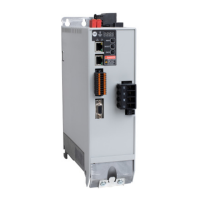
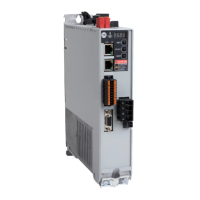
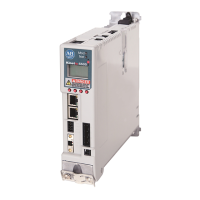
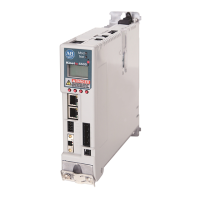
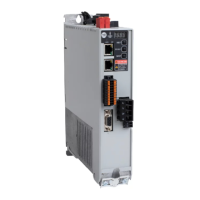
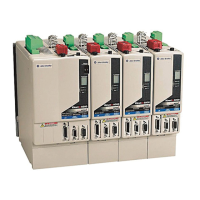
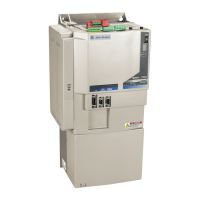
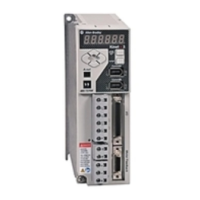

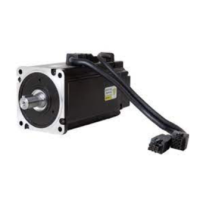
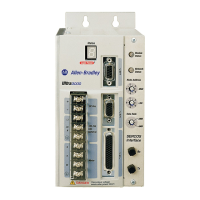

